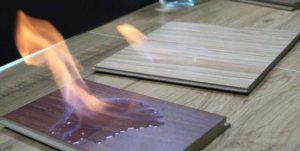If you’re building a house, you’re probably wondering which kind of plywood is best to use. If you’re unsure of what type you need, this commonly used interior plywood guide will explain the different types and sizes of this popular building material. This guide also includes brands and thicknesses. By following these steps, you’ll be able to make the best purchase for your project. But first, make sure you have an idea of the sizes and thicknesses of interior plywood before you purchase any of them.
Commonly used interior plywood sizes
There are a variety of sizes of common interior plywood, each suited to a particular application. Sanded plywood is a popular choice for kitchens, bathrooms, and exterior wall cladding. Its durability and finish quality make it an ideal choice for cabinets and other interior applications. However, it is also strong enough for structural applications. Listed below are some of the most common types of interior plywood. Read on to find out which types of interior plywood are best for your project.
Unlike exterior plywood, interior wood is not waterproof. This can pose serious construction issues. The materials are not made for extreme weather conditions, and can easily crumble if exposed to moisture. In fact, some types of interior plywood are only good for interior use. This means that you should use proper construction techniques, and make sure to choose interior plywood that meets your specifications. A common interior plywood size ranges from 8″ to 12″x12″.
In addition to common interior plywood sizes, you’ll also find specialised wood in various formats. For example, aircraft plywood ranges from one eighth of an inch to three millimetres. The aircraft industry also uses thinner veneers. You can even ask a lumberyard to cut your plywood into the size that you need for a particular project. There are a number of reasons why thickness is so important when choosing plywood.
Commonly used interior plywood thicknesses
Several common types of interior plywood are available. You can also choose a grade that has only one good side. These types of plywood can be used for pieces that are against a wall. Regardless of the type you choose, plywood is a great tool for home decor, furniture, and structures. Fortunately, there are many different thicknesses and types to choose from, and each has its own advantages. There are even varieties that can withstand hurricanes.
Choosing the proper thickness for interior plywood is essential to the overall integrity of the building. Plywood does not retain moisture well and is not waterproof. If exposed to the elements, it can result in collapses and weak spots in the structure, which can be hazardous. Commonly used interior plywood thicknesses include A-C and B-D. You should check the label before purchasing to ensure you’re getting the right product for your application.
Interior Plywood Types
Marine ply
When building a boat, you’ll want to use the best quality plywood you can afford. Regular plywood, by contrast, has a rough exterior and lacks a laminated finish. It’s also subpar in structure and durability, and it doesn’t meet the quality grade that is necessary for marine construction. Marine plywood is a better choice for interior applications, as it is less likely to have voids and is much easier to work with.
While regular plywood contains fewer layers than marine plywood, it is stronger than other types of wood. Marine plywood uses 100 percent hardwood in its core layers, which is stronger and more durable than regular plywood. These thin layers also resist water better than standard plywood. Unlike regular plywood, marine plywood has a higher moisture resistance rating, making it a superior option for boats. However, marine plywood is not as rot-resistant as regular plywood.
Veneer plywood
Veneer plywood is an extremely versatile type of wood. Often called “veneer faced plywood”, this type of wood provides a high strength-to-weight ratio while being lightweight and easy to work with. Because of its strength-to-weight ratio, this material can be easily shaped with hand tools or mechanical equipment to achieve the desired design. However, if the appearance of your finished product is important, you may want to consider other types of wood.
While veneer plywood has many advantages, it should never be confused with the traditional wood. While both are made from wood, their uses are not the same. A common example is the application for veneer plywood in kitchens. This type of plywood is most often used for exterior sheathing, but can be used on interior walls as well. It is available in varying thicknesses and lengths, and can be easily glued or nailed onto walls.
As a result of its inherent beauty, veneers are popular for kitchen cabinets. These materials are easy to work with and are highly durable. Unlike plywood, they do not have to be stained. Besides, you can even use them for outdoor projects. When choosing a veneer type, make sure you know the species that you will be using. If it is not available in your chosen species, you should consider using a synthetic veneer instead. Unlike wood veneer, laminates have a glossy finish. They are easy to work with, but are more expensive.

